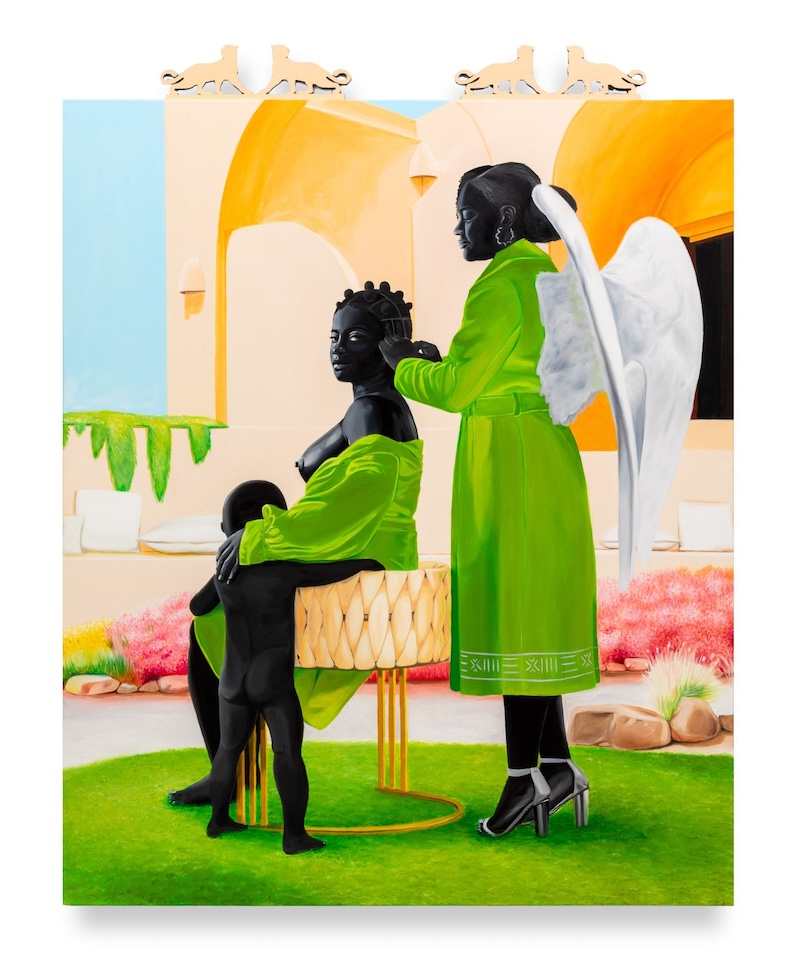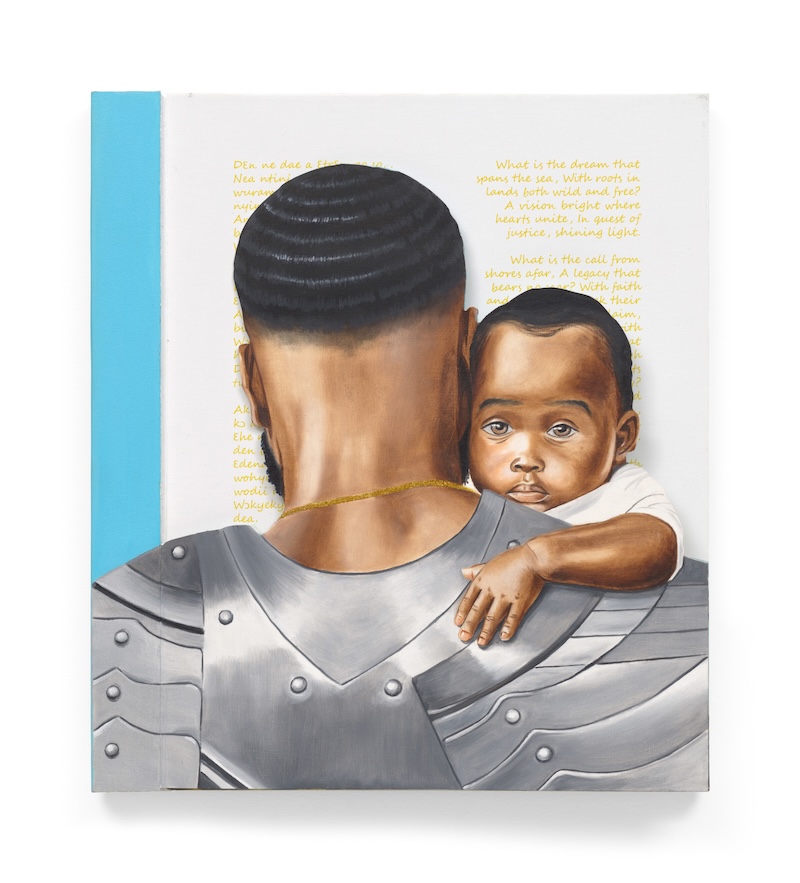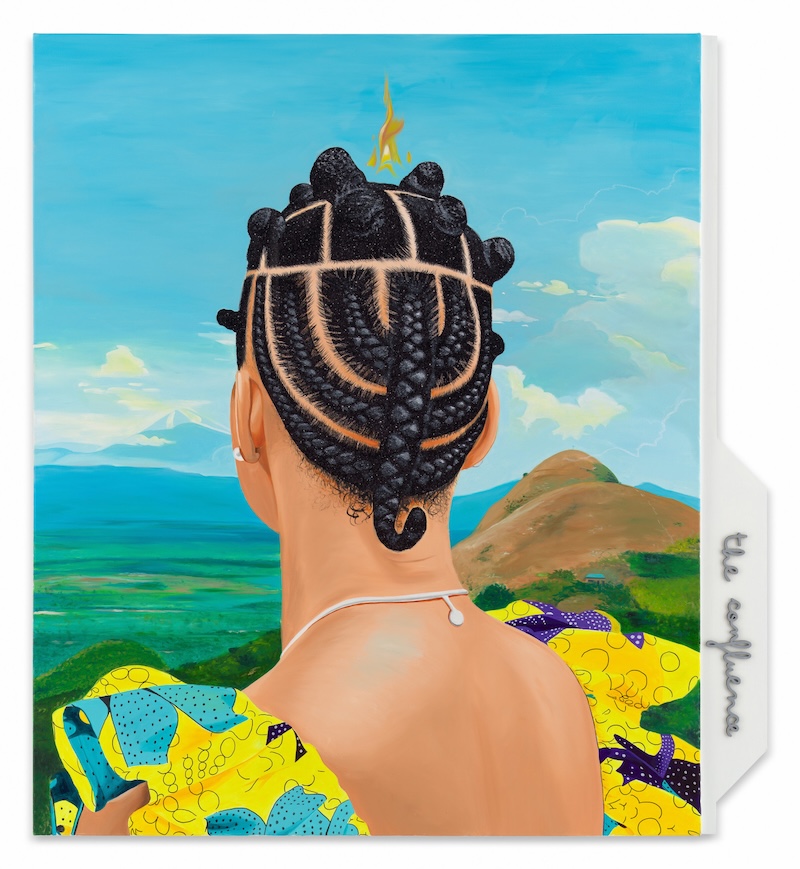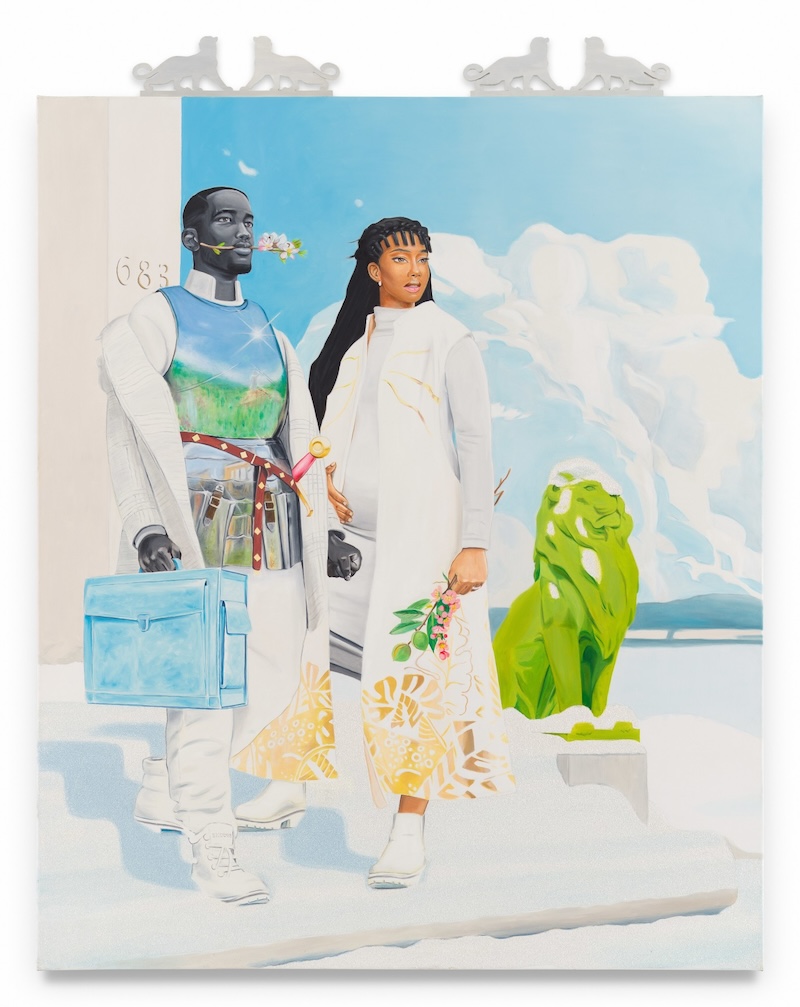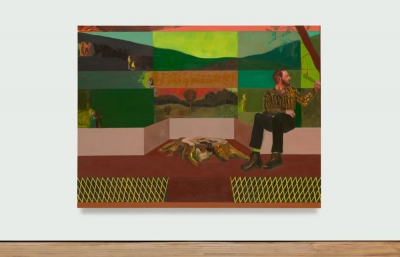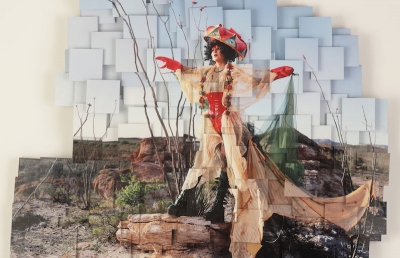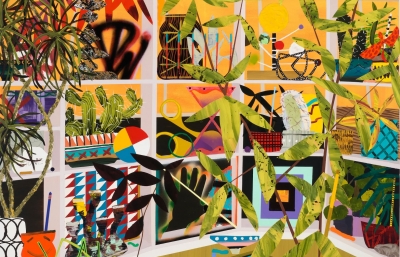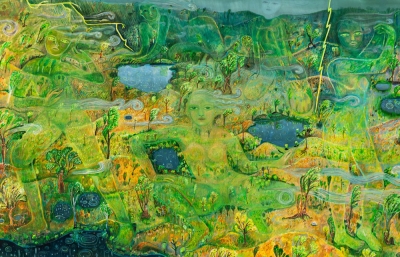Miles McEnery Gallery is pleased to announce In Jubilant Pastures, an exhibition of new paintings by Detroit-based artist Conrad Egyir, on view 5 September through 26 October. Accompanying the exhibition is a fully illustrated publication featuring an essay by Juxtapoz contributing editor, Charles Moore.
In Jubilant Pastures, Conrad Egyir’s first solo exhibition with Miles McEnery Gallery, presents a body of eleven paintings that interrogate themes of identity and belongingness. Born in Ghana, Egyir’s exploration of self and others shines through, questioning what it means to assimilate to a new land while maintaining one’s roots. The deeply iconographic work combines religious symbols, Ghanaian visual lexicon, migration ephemera, and nods to Black contemporary and historical artists.
Egyir’s subjects are those from the Afro-diaspora close to him—his family, friends, and colleagues—rendering them regal in brilliant hues and often applying illuminating glitter. His palette is personal—each color pulled from dreams and lived experience alike. Each portrait crafts narratives enlivened with empathy and spirituality, both through visual and written language. In some, Egyir will paint the same subject twice, furthering the concept of duplicity in identity. Idyllic landscapes sweep the background, his figures sometimes gazing out at the sprawling lands, other times turning away. Themes of displacement and migration shine through, placing the viewer in the shoes of those depicted, caught between nostalgia for the past and hope for the future.
Charles Moore writes that, “the artist explores the meaning of Blackness, digging into his personal history as an African man in the U.S., where Black Americans note their ability to identify foreigners by their accent, speech patterns, and style of dress, and honing in on what it means to be different. The desire to assimilate—to blend into Black American spaces—resonates with the artist; accordingly, in his work, he invites his subjects to occupy the places they wish to inhabit, and storytelling lays the foundation for this process.”



